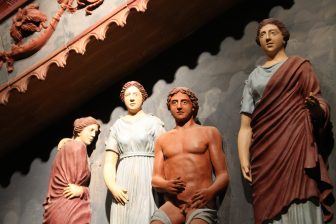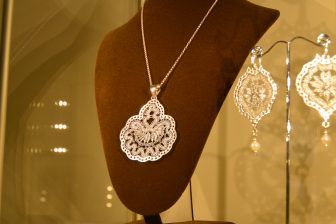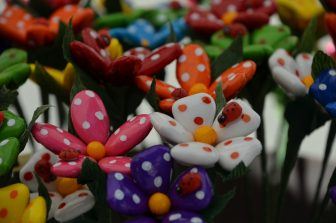
[ Nov.2017 ] When we were in Chieti in Abruzzo in the middle of Italy, our friends arranged to have a guide and an interpreter.
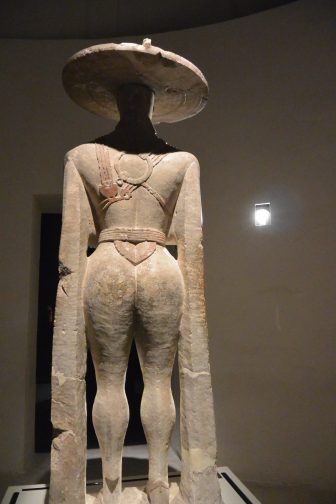
The building was originally built as a villa for an aristocratic family and during the second world war, it was used by the German forces.
It became a museum in 1959.
The highlight here is a big statue called ‘the Warrior of Capestrano’.
Somehow this statue reminded me of a gaucho, maybe because of the broad brimmed hat he is wearing.
He was standing on his own in a new room made in 2011.
The statue was made in the 6th century BC before the Roman era and apparently it was standing on a grave.
They found it on farmland and because the farmers moved it, they do not know whose grave it was.
It seemed a man, but from his back, his buttocks are round and feminine.
I have never seen anything like this and it gave me a strong impression, maybe because of the hat.
On the first floor of this museum, there was a chest part of a female statue which was found near this warrior.
Because it is much smaller than the warrior, some people think it could be his daughter.
After leaving this museum, we went to another archaeological 
This one called “La Civitella” was very modern, built in 2000.
It is situated almost at the top of the hill of Chieti and built on the Roman ruins including amphitheatre.
The first thing we saw here was the reproduction of the three temples found here.
On the facade, there were statues of Greek gods who were renamed and worshiped by Roman people.
They believe that the temple as well as the statues were very colourful.
The female gods have pale skin colour while the male ones were darker.
In another room, there was a reconstructed grave of a person who used to be a slave but climbed all the way to be a governor.
This grave described his life in detail and because of that, they understood that the temples were destroyed at one point and an amphitheatre was built at the same site.
This amphitheatre accommodated 600 people and they watched the fights of gladiators.
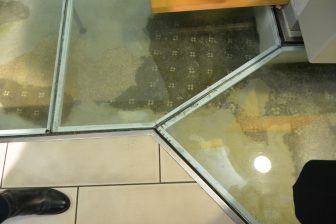
When we got out of the museum, it was already dark.
The problem of autumn and winter holidays is that the day time is so short.
We moved into the centre of the town and they explained that anywhere in the town there are ancient ruins.
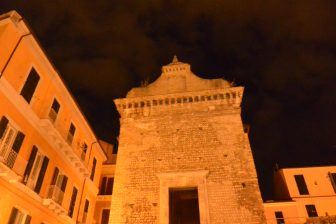
There are other ruins of the Roman temples in the centre of the town, too.
Here, too, there used to be three temples next to one another, but only one remains.
And this building was used as a church, changing its entrance.
The small diamond shaped pattern on the wall of this temple was very nice.
People in this town live contemporary modern lives, surrounded by these ruins, like people in Rome.
In 1000 years time, I suppose our contemporary life will become ruins, too.


